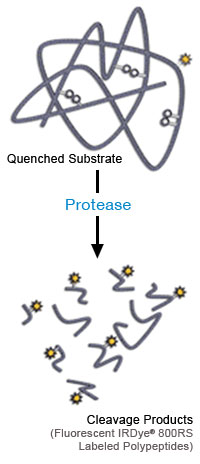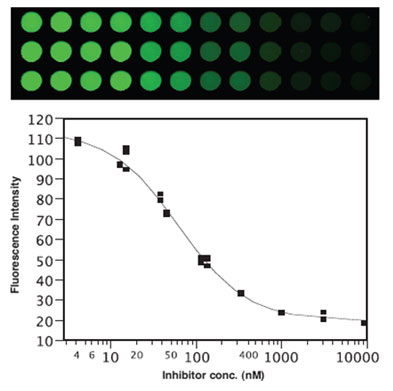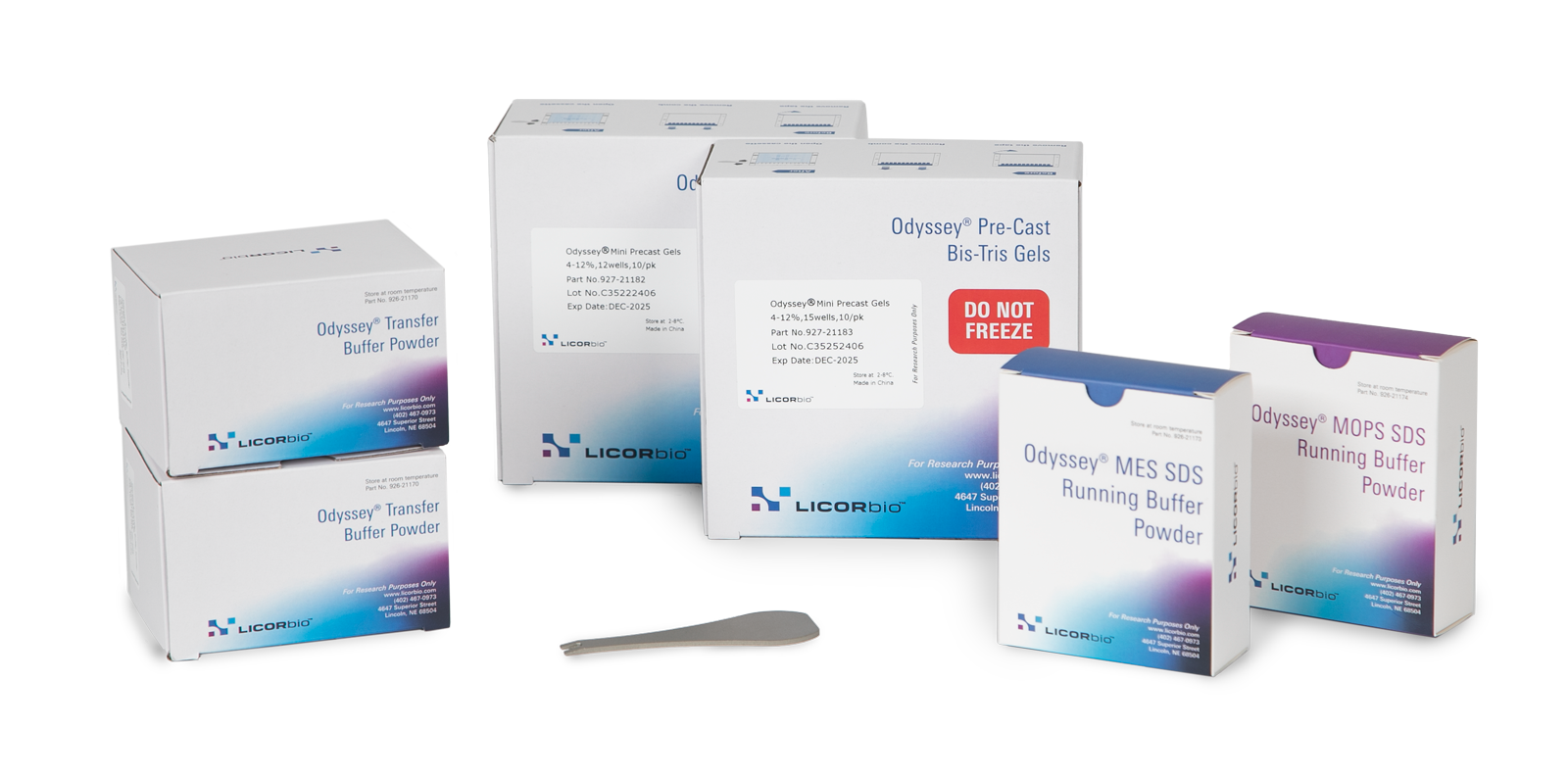Protease Assay
FRET-quenched protease assays are a fast, quantitative way to measure protease activity.1 One advantage of using quenched fluorescent substrates in real-time quantitative PCR, protease digestion assays or in vivo optical imaging is the ability to achieve a good signal-to-background ratio in the presence of excess unreacted or unbound fluorescent probe. Intact substrate is fluorescence-quenched, either by self-quenching (as shown in schematic) or by a quencher dye, such as IRDye® QC-1. Cleavage causes dyes to separate, relieving quenching and generating signal. There is no interference from uncleaved substrate.2
IRDye QC-1 infrared dye has been assessed and shown to be an excellent quencher by these standards.1 IRDye QC-1 was tested in protease assays for caspase-3, HIV, and β-secretase. The quenched peptide substrates for these assays were designed with a donor and quencher placed on opposite sides of the protease cleavage site. Upon cleavage by the protease, the donor and quencher are separated beyond the required interaction distance and fluorescence emission is detected from the donor dye.
Advantages of Using Near-Infrared Fluorescence
- Simplicity. Just mix and read
- Flexibility. No stop solution required; easy to monitor reactions over time
- Sensitivity. Near-infrared detection reduces background, scattering and interference caused by other compounds.3
- Subnanomolar enzyme detection
- Suitable for protease inhibitor screening, drug candidate IC50 measurement and high throughput screening of enzyme activity.
- Excellent water solubility

Data Example of an HIV-1 Protease Assay

